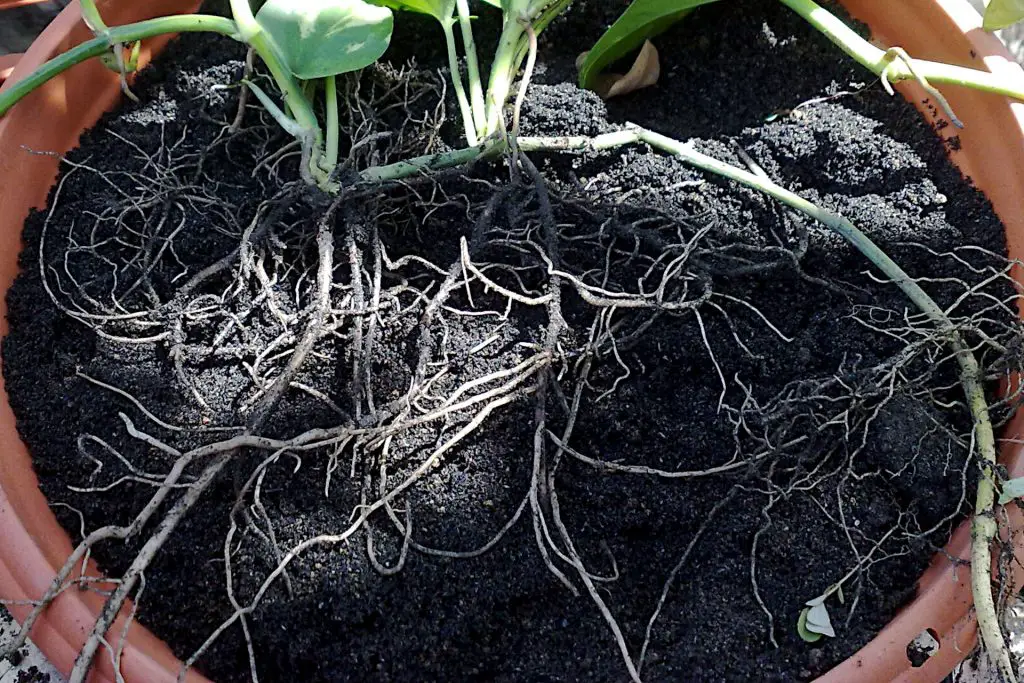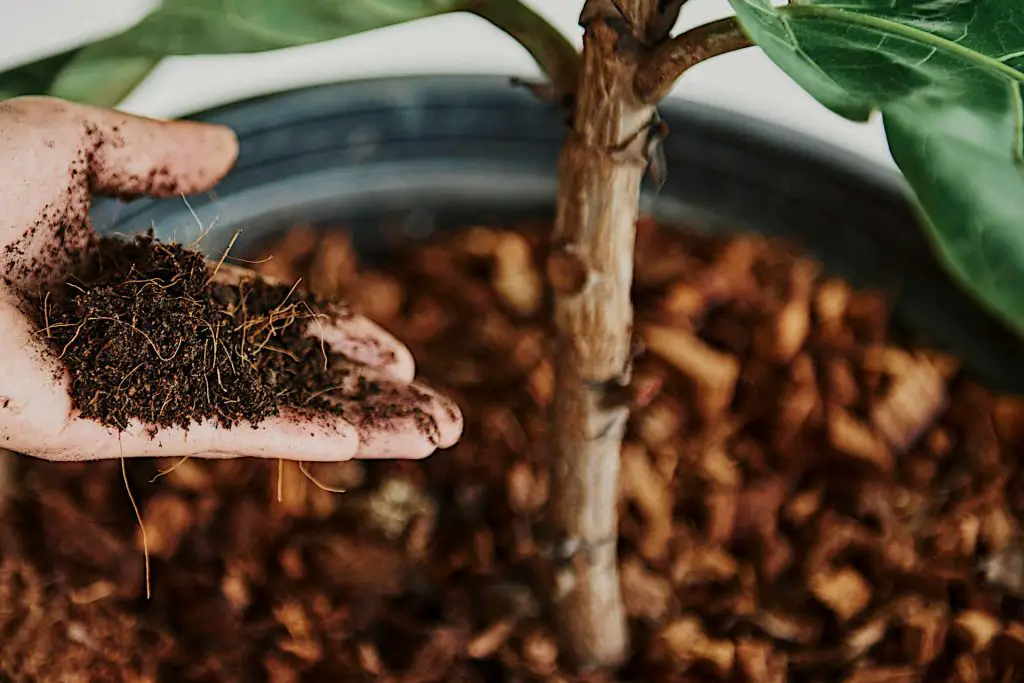Do Indoor Plants Need Drainage? How To Ensure Your Plant Maintains the Correct Moisture Levels
Drainage is a control mechanism for maintaining moisture at the right levels of your growing medium to enable plants to thrive. For plants to prosper they need the right level of moisture and thus adequate drainage is essential. This is especially the case with indoor plants or any plants that are contained in confined spaces. Adequate drainage is about using the right growing medium, the correct watering regime for your environment, and monitoring as much as it is about holes in the bottom of plant pots.
Drainage isn’t just about the design and structure of the pot. It often comes down to using the right growing medium, understanding the surrounding environment in terms of humidity, and using tools such as moisture meters to regulate the moisture levels.
This is not to say that the pot isn’t important. Having drainage built into the pot can go a long way to helping regulate the moisture levels, as do watering regimes. Watering and drainage go hand in hand in determining the ability of your indoor plant to thrive.
Why Do Indoor Plants Need Good Drainage?

All -plants need good drainage to prosper. It is important to understand that the requirements for drainage result from the need to maintain moisture in the soil at the right level for the plants to grow.
This is particularly true of indoor plants as they are usually planted in confined spaces such as pots. It is essential to ensure that your potted plants have adequate drainage, this is regardless of whether they are kept indoors or outdoors.
Plants need water, but they don’t need too much. Too much water can cause root rot, which leads to damage and ultimately the death of the plant. Overwatering is a common problem for indoor plants because of the nature of the growing environment, poorly designed containers, and householders who are unaware of how important it is to keep plants well-drained.
Plants Need Water
Almost everybody understands that plants need water in order to survive and thrive. But it’s easy to overdo it, particularly when watering your indoor plants. Unlike plants in the ground, often there is nowhere for any excess water to be absorbed. Instead, it saturates the soil or growing medium, which, if left in like this for extended periods, can devastate your plant.
Plants draw moisture from the soil. Although plants are able to ingest water through their leaves, this method of water uptake is not nearly as efficient as via the roots, which are responsible for the majority of the water that they absorb. As such, watering the soil is the best way to ensure the plant gets the water it needs.
Assessing the Right Amount of Water and Drainage for Indoor Plants
The quantity of water a plant requires is determined by a number of factors, such as the size and species of plant being grown, environmental conditions, and the growth medium. a better question because of these factors is knowing when you have watered enough.
A regular watering regime is often employed to ensure that the plant has adequate moisture to draw on but if it doesn’t have don’t enough drainage, the growing medium retains too much water which can lead to overwatering problems.
A good way to tell if your plant has enough water is by looking and touching the soil or growing medium used. The soil should be damp to the touch, but not wet, and there should certainly be no standing water on the surface.
If you are going to structure a watering regime then just check in the morning and evening and water if you feel the soil is too dry.
How to Tell if Your Indoor Plant Has Adequate Drainage?
There are several ways of telling whether your plant has enough drainage. The sight and feel test also applies here too. If the soil remains overly damp, wet, or worse still saturated thirty minutes after watering, then it may well need more drainage.
Another aspect to look at is the condition of the pot. If you are using a clay pot and see any dampness on the bottom part of the pot, it means there is not enough drainage as water is seeping out through the sides.
What Do the Roots Tell You?

If you are concerned as to how your plant is performing then you should check the roots of your plant. In general, roots should be moist, but not wet. If the roots of your plant are dry, it means the plant isn’t getting enough water.
Root Rot
Root rot is caused by a fungus that thrives in oversaturated growing mediums, which often results from a lack of drainage. Roots are the foundation and feeding mechanism of your plant, if your plant’s roots are not healthy then your plant will suffer.
The are several tell-tale signs that your plant is suffering from root rot through a lack of drainage:
- If a significant number of the plant’s leaves are yellowing
- Notable leaf loss, beyond the expected occurrence
- Leaves with brown spots here and there
- Leaves that are paler and more diminutive than usual
- A notable amount of wilting
- Inadequate or stunted growth
- Blacked roots[1]
- Roots that disintegrate into pulp
Because root rot cannot be treated and can rapidly spread, allowing it to continue in its current condition of decomposition will ultimately result in the death of the entire plant.
Indoor plants should never be subject to extended periods of oversaturated soil. It is important to get the balance between the moisture they need and over or under-watering.
Improving Drainage for Your Indoor Plants
The obvious place to start is by looking at the container the plant is in. Indoor plants often serve a decorative purpose and unsurprisingly the contain or pot plays a large role in the overall aesthetic effect that is achieved.
The most important aspect of any pot in terms of your plant’s ability to thrive is the drainage that it provides. Quite often you will find that the most decorative don’t have drainage holes at all which is the worst possible scenario.
In these cases, there are two options. Firstly you can make sure that you have a secondary pot inside this with its own drainage hole and water tray/saucer. Alternatively, you can add a drainage layer below the roots so that excess water has somewhere to drain away.
If your pot or container does have drainage holes then it is important to make sure that they are both sufficient and clear.
How To Improve Plant Drain Holes
There are several ways in which you can improve the drainage of your potted plants. The first thing is you want to make sure that all of the drainage holes in the pot are clean. You can use a toothbrush or cotton swab to remove dirt and debris that might be blocking these holes.
You can also look to add more drainage holes to the bottom of the pot. You can do this by drilling or cutting depending on what your pot is made out of.
Another option is to buy a new pot with better drainage holes. You can buy pots with drainage plugs that allow you to manipulate the amount of drainage.
Using a Pot Saucer
Instead of watering directly onto the soil, you can instead use a water tray or cache pot saucer. With adequate drainage holes in the pot, you can set it on the saucer and add water to the saucer. The water will be drawn up through the holes into the soil. This method gives you more control over the watering process and should prevent overwatering.
Understanding Your Environment
It is not just the pot that affects the amount of water retained in the soil and therefore the amount of drainage required. The environment in which your indoor plants are kept has a considerable bearing on the water regime that you employ
Plants that are kept in an environment with low humidity levels will dry out more quickly than those kept in a humid environment. This means that your watering will have to be adapted to suit.
Growing Mediums

One solution that can help with drainage is choosing the right growing medium for your plant. From soil to various potting mixes there are a number of different growing mediums that you can use with indoor plants and each will have an effect on drainage.
Generally, it is not advisable to use soil as it can contain pathogens, stray seeds or fungus that can be damaging in a confined space that a pot provides. Potting mixes are sterilized and as such are free from these.
The other advantage potting mix has over other growing mediums, such as soil, is that it has greater water retention capabilities. It also though is made up of a certain amount of sand and frequently perlite and/or charcoal, which have fantastic aeration and drainage qualities. Water that isn’t absorbed will pass through these mixes easily.
LECA balls
Another option is LECA balls (lightweight expanded clay aggregate). These are clay balls that are often used in hydroponic gardening as a replacement for soil. These clay stones absorb water releasing it as the plant needs it.
Because they are effectively small round balls, excess water passes through them easily. The downside is that they don’t contain the nutrients for a plant to thrive so, these have to be added to the water or the LECA used in combination with other growing mediums, such as laid on top of potting soil, specialist compost, or adding to the water.
Soil Moisture Meters
Another option is to invest in a soil moisture meter. These are small inexpensive probes that you can place inside each of your pots to ensure that your growing medium always has around the right amount of moisture.
It is important to note that different species require different moisture levels but generally most flowers require moisture levels of around 21-40%, although as a rule of thumb water should be around 25%[2]
Summary
To get drainage for your indoor plants right it is important to understand that it is more than about having holes in the bottom of a pot. Essentially, it is about maintaining an adequate water level so that the plant has enough water to survive but is not overwhelmed by the saturation of its growing medium.
Generally, this will mean in an indoor setting with plants contained in pots that proper drainage is in place as it is far easier to over-saturate the potting mix in this circumstance.
What is clear is that you should never let water sit on top of the soil for more than a few minutes. If you’re using a container with no drainage hole, make sure you add enough water so that the soil is moistened just below the surface.
Ultimately, drainage is about using the right growing medium, knowing how humidity can affect moisture levels, using tools such as moisture to regulate the moisture levels, and having a pot that has good drainage.
Notes:
- Cornell University, Matt Walker:Black Root Rot: Thielaviopsis Basicola Black Root Rot http://plantclinic.cornell.edu/factsheets/blackrootrot.pdf
- Kansas State University, Danny H. Rogers: https://www.ksre.k-state.edu/irrigate/reports/L904.pdf
